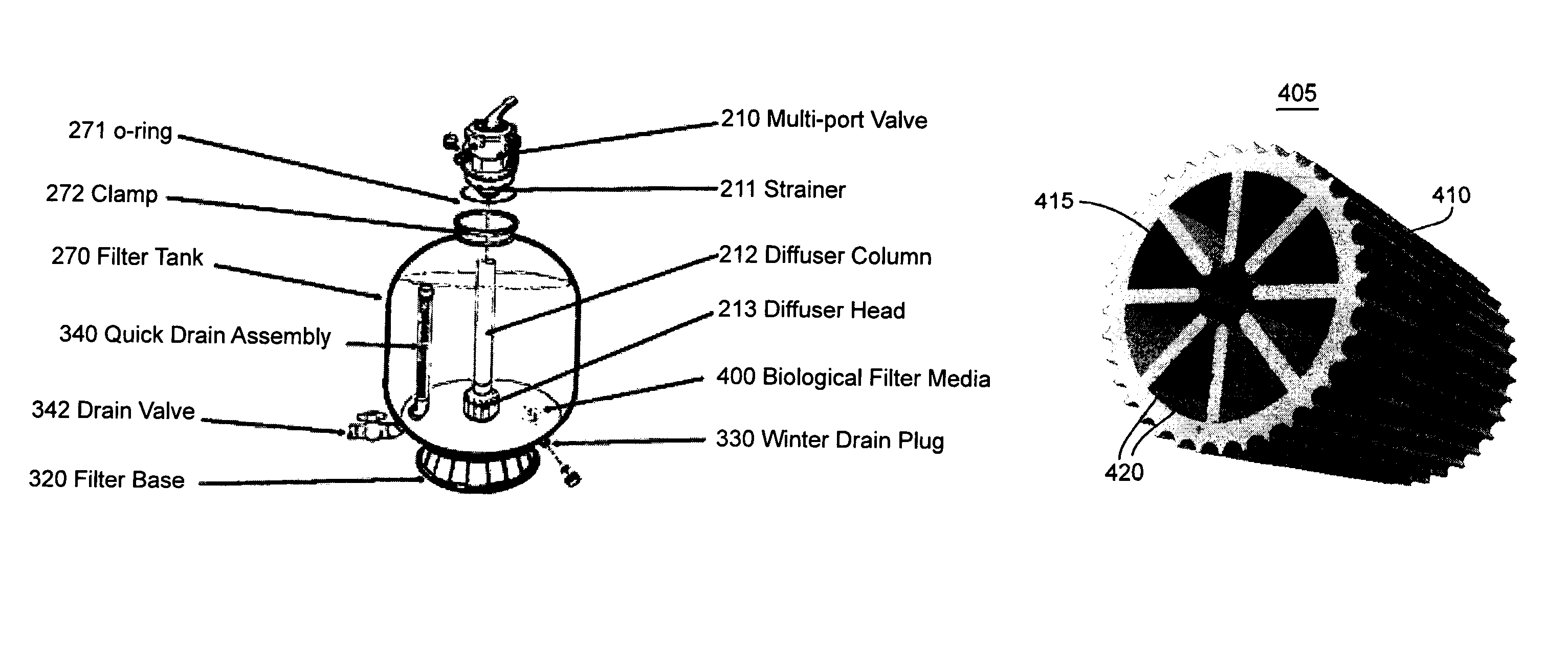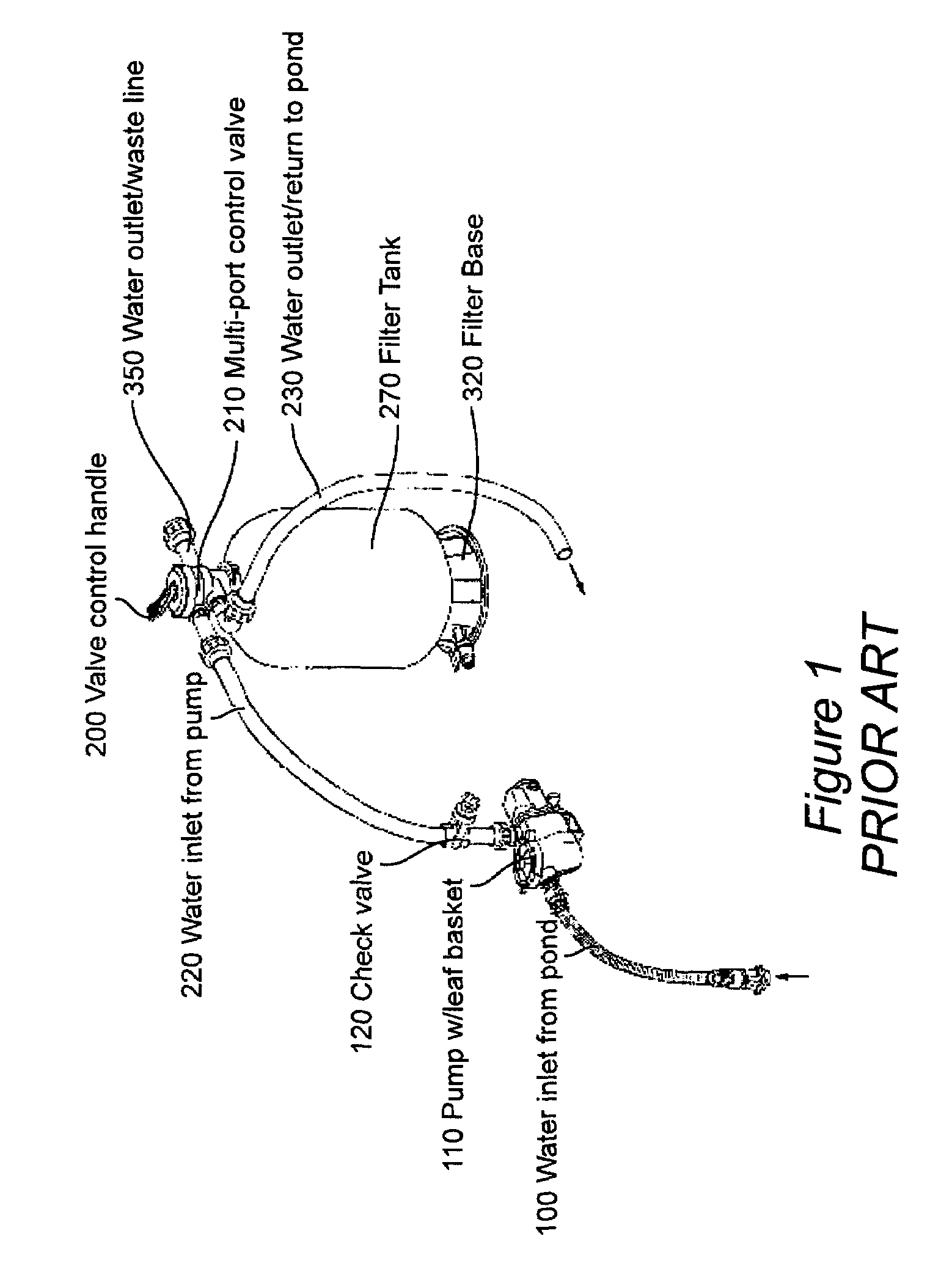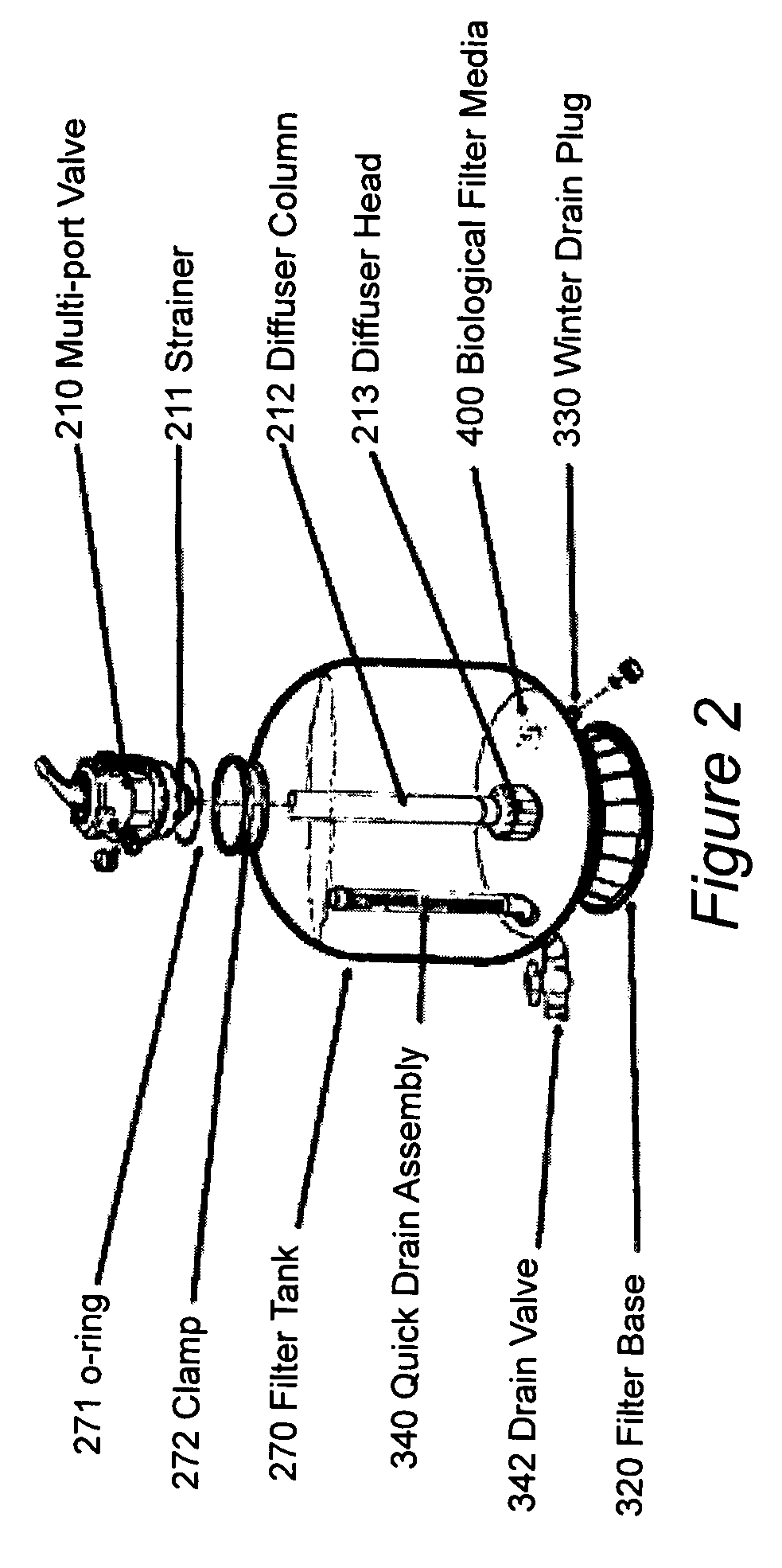Without an adequate filtration system two things happen: One, the water will not stay clear.
Decomposing or decaying debris, plants, or any
organic matter will cloud the water, release toxic gases into the water, and consume
oxygen.
This promotes
algae growth which in turn consumes even more oxygen from the water.
Without an adequate filtration system the fish will literally die in their own waste.
However, cleaning a simple up-flow filter is untidy and inconvenient.
However, there are three major drawbacks in using sand as a filter.
First, the sediments collected at the top layer of the sand often cake up and the water will find its way to the bottom of the filter by channeling through the sand.
This renders the biological filtration ineffective.
Second, sand requires frequent
backwashing (as often as 2 to 3 times per day with heavy fish loads), which can be a great inconvenience.
A suitable pump consumes considerable electrical energy.
However, there are still a few design limitations to the current state-of-the art systems available.
This mode of cleaning of the filter requires time and considerable water.
1) Over time,
dirt, debris and other organic materials cause the floating beads to stick together and normal back-washing does not effectively remove all of the debris strained by the beads. Thus, especially in large tanks, a high flow volume
air blower must be used to “unpack” the beads. This can create problems if the
air blower is left on too long, (more than the seven minutes recommended by the manufacturer).
2) The air rising from the bottom to the top of the filter creates turbulence that scrubs away some of the
beneficial bacteria on the surface of the beads. This causes a spike in
ammonia and
nitrite levels in the pond water that is considered stressful and may be dangerous to
fish health. This
elevated level of
ammonia and
nitrite in pond water may last as long as 3 to 5 days before filtration reduces it to a tolerable level. While the tight packing of the beads provides cleaner water, it also requires frequent cleaning of the filter every 7 to 10 days. So, while the bead filter is efficient, it also purges useful
bacteria, limiting the overall effectiveness of the bead filter's biological filtration.
3) Bead media have a smooth outer surface and over time
bacterial growth begins to form
layers. The first layer of
bacteria can be encapsulated by newer growth and can become anaerobic. This can
impact fish health by consuming oxygen, lowering the
pH level, increasing stress, and emitting harmful toxins into the water as underlying
layers of
bacteria decay.
4) Bead media are uniform in size. Thus they tend to pack uniformly, resulting in water channeling through the bead
bed that greatly reduces filtering effectiveness.
Second, water travels on the surface of the tubular media as well as through the hollow inner space of the media.
First, current systems continue to use components of a
sand filter which have the diffuser column consisting of a number of lateral slot that have openings that are small, thus preventing the sand from passing through. This results in rapid clogging when the diffuser is used as a pond filter.
Second, the strainer does not have sufficient openings to allow the
dirt to be removed from the filter
bed quickly. Consequently, current systems consume a significant amount of water in
backwashing the media
bed. Furthermore, the openings in current systems are small circles, and this has the unfortunate effect of creating a
water jet that stirs up the
biological media at the top of the tank.
Third, a first diffuser head (with multiple lateral slots) is located at the bottom of the filter tank and a second diffuser head (generating spiral water jets) is located at the middle of the diffuser column. During backwash, the water is divided into two portions. One provides water to the laterals located at the bottom of the filter tank, lifting the media bed and dislodging dirt and debris from the media bed. At the same time, the combination of the second diffuser's water jets with the lateral jets at the bottom will stir the media bed in an upward spiral motion. This movement of the media bed further dislodges dirt and debris trapped within the media bed and directs the dirt and debris to the waste line through the multi-port valve. This diffuser column configuration has several disadvantages. Since the water is divided into two portions, the water that exits at the second diffuser head may not provide sufficient pressure in order to effectively stir and agitate the entire media bed. Also, the water that exits through the lateral slots at the bottom of the filter tank will not have enough
water flow volume to rapidly dislodge dirt within the lower portion the media bed. Thus it will take more water to clean the entire media bed, resulting in energy inefficiency.
Fourth, the bio media is made of ABS plastic, a sinking type of bio media which requires more energy to clean, and is not made to be used for
retrofitting of any bead systems on the market.
 Login to View More
Login to View More 


